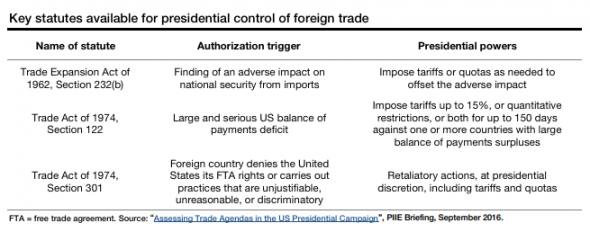Of US-China trade war games
Well gentlemen, it seems that we have little option now but to declare war immediately.
We joke, we joke. A US-China trade war is obviously nobody’s base case. They all say so right up the top of notes, after all.
But considering base-cases haven’t been holding their own recently we should maybe take a look at what happens if a trade war does materialise. After all, lashing out internationally can make for good domestic politics, and China trade-war rhetoric was a recurring trope of the Trump presidential campaign, even if the real story is muddied by facts.
Here’s SocGen with a reminder of the president’s powers to act:
And here’s Deutsche with those facts about China’s real place in terms of trade with the US (our emphasis):...MUCH MORE
In fact, nearly 37 percent of China’s exports to the US in 2015 consisted of value-added imported from other countries (Figure 3). Redistributing the imported value-added to their original source countries gives a very different deficit decomposition picture for the US (Figure 4).1 While China still has the biggest “responsibility” for the US’s trade deficit, its share is only 16.4 percent. It is nowhere near the jaw-dropping 49.6 percent in Figure 1, which is about the combined share of the top 4 surplus partners (China, Japan, Germany and Korea) in the value-added based decomposition. Taiwan, previously not among the top 10 surplus partners in Figure 1, now ranks no. 6, accounting for 6.6 percent of the US’s trade deficit in 2015.Thus a “trade war against China would be a war against all participants of the global supply chain, including some US companies.” So how would a President Trump actually fight one?
